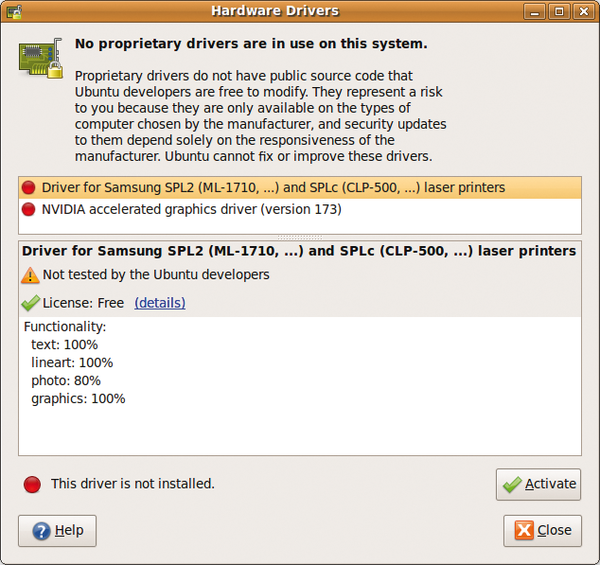Nov 29, 2019 Use rpm command to display a list of install installed packages on CentOS server Is nginx and bash package installed? Find out, run: sudo rpm -q nginx package nginx is not installed sudo rpm -q bash bash-4.4.19-7.el8.x8664. Use repoquery command from dnf-utils package. First, install yum-utils (CentOS 6.x/7.x) or dnf-utils on a CentOS 8.x. Install all prerequisites for a successful Nvidia driver compilation and installation. # yum groupinstall 'Development Tools' # yum install kernel-devel epel-release # yum install dkms The dkms package is optional. However, this package will ensure continuous Nvidia kernel module compilation and installation in the event of new kernel update. Installing dkms on CENTOS 6. Just find the package you need download and install. 1.-Download and install redhat 7 binaries ISO 2.-Register. This article explains how to install a.deb package on CentOS Linux 7. Although there are many ways to do this, here is one. Scenario Here's how this story started. In a land far far away, someone walked over to a PC with CentOS Linux 7. It has Mozilla Firefox, but a finicky web application. For CentOS / RHEL If the dkms package was installed in the OS prior to the time when you install Veeam Agent, to install the product, use the following command: yum install kmod-veeamsnap veeam. With this command, the veeamsnap kernel module will be installed from the binary kmod-veeamsnap package.
The beegfs-client-dkms package allows building the client kernel module using the DKMSinfrastructure.
To avoid breaking existing workflows and deployment tools that may be in use on some sites, bothbeegfs-client and beegfs-client-dkms packages are provided. They are mutuallyexclusive and only one of them can be installed on a system at any given time.
Note
All the examples below were tested on a CentOS 7 machine. They may need to be adapted to otherversions of CentOS or other distributions.
Changes Introduced in the DKMS Client Package¶
The DKMS variant of the BeeGFS client introduces some important changes:
the previous startup scripts have been removed as building and installing the kernel module is now done by DKMS;
as a consequence, module load and filesystem mount are now done via standard OS mechanisms.
DKMS Client Installation¶
Installing the Package¶
The EPEL repository needs to be activated on RHEL/CentOS to be able to install dkms.
Installing the package is done easily:
And so is replacing the traditional client package with the DKMS one:
DKMS will build the kernel module automatically during installation. The log file for the build is available there:
Note
The module is not loaded automatically by DKMS after build.
Loading the Kernel Module¶
Once built with DKMS, the kernel module can be loaded like any other:
This can also be done automatically at boot via an entry in /etc/modules-load.d/. For example:
Thirdparty OFED installations¶
To use thirdparty RDMA drivers, for example Mellanox OFED, specify the path to the driver’s includedirectory in /etc/beegfs/beegfs-client-build.mk:
and then install the beegfs-client-dkms package.
Note that if the BeeGFS client is already installed, for example during upgrades if the OFED driver,a rebuild of the BeeGFS kernel module via DKMS is required. This might not happen automatically,but can be achieved by simply reinstalling the beegfs-client-dkms package.
Mounting the Filesystem¶
Mounting a BeeGFS filesystem is now done via an entry in /etc/fstab.
A typical entry would look like this:


In those entries:
the first and third fields must always be
beegfs_nodevandbeegfs;the second field contains the filesystem mount path, here
/mnt/beegfs;the mount option
cfgFile=specifies the path of the BeeGFS client configuration file for that mount point.the option
x-systemd.after=beegfs-helperdensures the mounting happens after the helperdaemon has been started. This can be removed if running without helper daemon.
In case the client is running on the same machine as any of the BeeGFS daemons consider addingx-systemd.after=beegfs-mgmtd, x-systemd.after=beegfs-storage, orx-systemd.after=beegfs-meta as appropriate to ensure correct startup order.
This example will mount the filesystem automatically at boot, after the network devices have come up.To disable automatic mounting add noauto.
Finally mount the BeeGFS filesystem like any other filesystem:
Installing Dkms On Centos 7 Command
Known Limitations¶

In those entries:
the first and third fields must always be
beegfs_nodevandbeegfs;the second field contains the filesystem mount path, here
/mnt/beegfs;the mount option
cfgFile=specifies the path of the BeeGFS client configuration file for that mount point.the option
x-systemd.after=beegfs-helperdensures the mounting happens after the helperdaemon has been started. This can be removed if running without helper daemon.
In case the client is running on the same machine as any of the BeeGFS daemons consider addingx-systemd.after=beegfs-mgmtd, x-systemd.after=beegfs-storage, orx-systemd.after=beegfs-meta as appropriate to ensure correct startup order.
This example will mount the filesystem automatically at boot, after the network devices have come up.To disable automatic mounting add noauto.
Finally mount the BeeGFS filesystem like any other filesystem:
Installing Dkms On Centos 7 Command
Known Limitations¶
Installing Dkms On Centos 7 32-bit
BeeOND is currently incompatible with the BeeGFS DKMS client package, as it calls the traditional startup scripts.
Quick not note for those not familiar with the CentOS 7 peculiarity and especially the repository peculiarity.
Receiving the follwoing error:
It means you need a package (or meta-package, which might pull multiple packages and dependencies offering a big framework, for example), which could not be found in the existing repositories. In this very case, we need the DKMS (Dynamic Kernel Module Support) – https://en.wikipedia.org/wiki/Dynamic_Kernel_Module_Support
The DKMS is offered in epel repository and it could not be found in the CentOS 7 official repositories. Just add the epel repository.
And rerun your first install yum line. Now you won’t receive the DKMS error.
